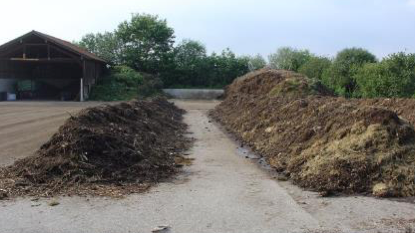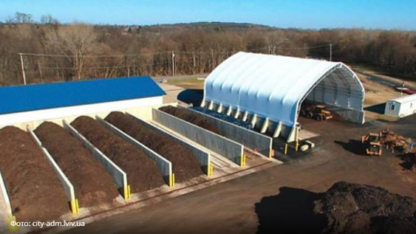In Ukraine, in addition to traditionally used manure and slurry, other organic fertilizers products are produced based on manure and slurry as well as peat and sapropel. Fertilizers can also be distinguished on the basis of the natural mineraloid – Leonardite. With introduction of biogas plants, it is also possible to distinguish organic fertilizer from digestate and its derivatives.
Composts
Compost is organic matter that has been decomposed in a process called composting. This process recycles various organic materials otherwise regarded as waste products and produces a soil conditioner (the compost). Compost is rich in nutrients. It is used, for example, in gardens, landscaping, horticulture, urban agriculture and organic farming. The compost itself is beneficial for the land in many ways, including as a soil conditioner, a fertilizer, addition of vital humus or humic acids, and as a natural pesticide for soil. In ecosystems, compost is useful for erosion control, land and stream reclamation, wetland construction, and as landfill cover.
- Figure 1 – Community-level composting in a rural area in Germany
- Figure 2 – Municipal composting station in Lviv (design, under construction
At the simplest level, the process of composting requires making a heap of wet organic matter (also called green waste), such as leaves, grass, and food scraps, and waiting for the materials to break down into humus after a period of months. However, composting also can take place as a multi-step, closely monitored process with measured inputs of water, air, and carbon- and nitrogen-rich materials. The decomposition process is aided by shredding the plant matter, adding water and ensuring proper aeration by regularly turning the mixture when open piles or “windrows” are used. Fungi, earthworms and other detritivores further break up the material. Bacteria requiring oxygen to function (aerobic bacteria) and fungi manage the chemical process by converting the inputs into heat, carbon dioxide, and ammonium.
A wide range of organic materials are suitable for composts production, so their composition can be quite varied. As an example, the Ukrainian company JSC “Eco-Azot” in the Cherkasy region produces compost with water content of 32-40% based on chicken litter with the addition of lowland peat, phosphorite flour and wood chips. Wholesale price for such compost is claimed to be 1560 UAH/t (≈ 58 €/t).
Vermicomposts
Vermicompost is the product of organic material degradation obtained by using various species of worms, usually red wigglers, white worms, and earthworms, to create a heterogeneous mixture of decomposing vegetable or food waste (excluding meat, dairy, fats, or oils), bedding materials, and vermicast (Fig. 3). Vermicast is also known as worm castings, worm humus or worm manure, the end-product of the breakdown of organic matter by species of earthworm. The vermicompost market niche is similar to conventional compost.
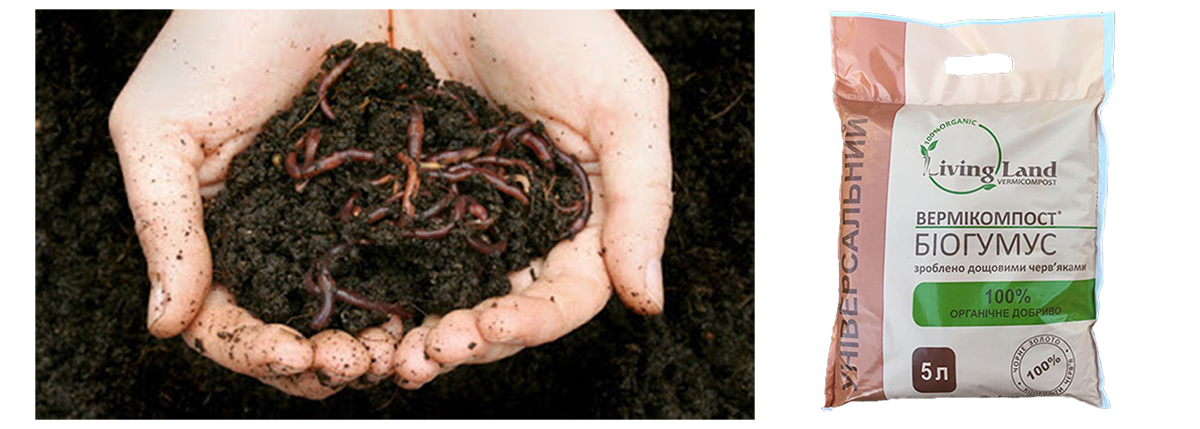
Figure 3 – Vermicompost in Ukraine (example)
Granular fertilizers
Granular organic fertilizers are often made on the basis of chicken manure or are simply a granular form of chicken manure itself. The advantages of granular fertilizers include their environmental friendliness, which is ensured by high-temperature processing, and therefore disinfection and neutralization of invasive pathogens. The granular form of fertilizer during periods of drought retains moisture, slowly gives it to plants, microorganisms, creating favorable conditions for the formation of future crops. The advantage of granular fertilizer is the possibility of local, less costly application. The market niche for such fertilizers is highly concentrated organic fertilizers with slow release of nutrients. Due to complete sterilization and stabilization, granular fertilizers based on chicken manure is a product with export potential, what is confirmed by export statistics of such fertilizers from Ukraine. Examples of such fertilizers trademarks in Ukraine are shown in Figure 4.
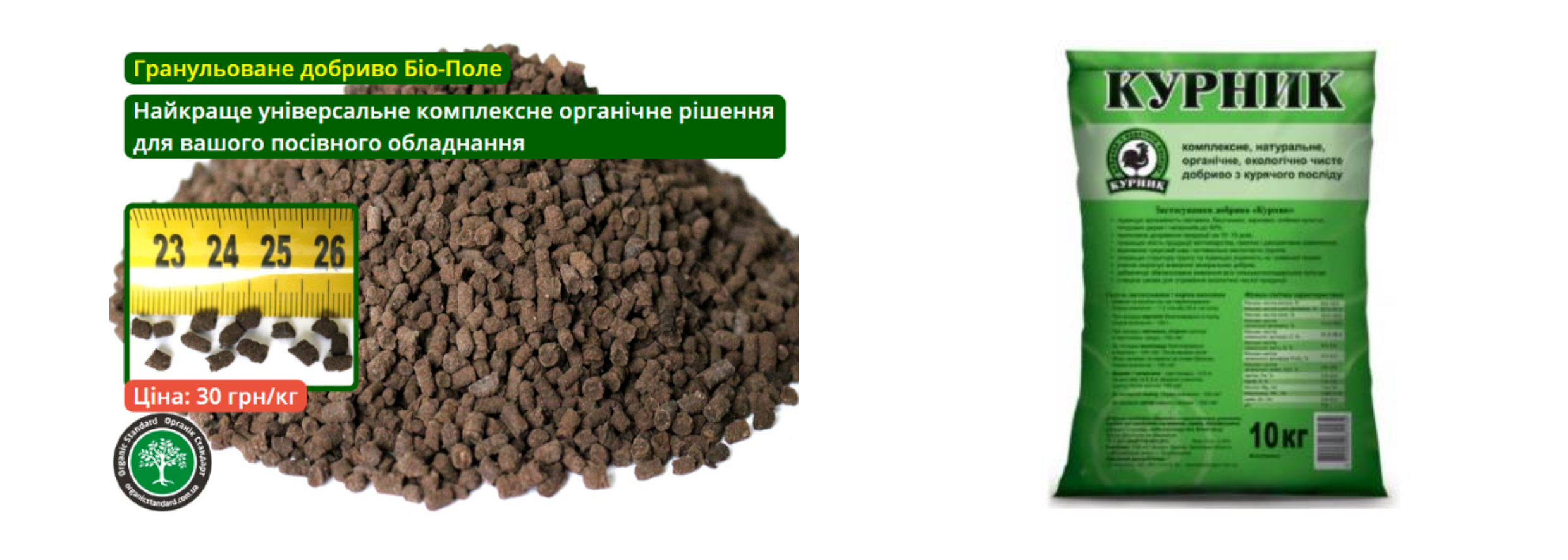
Figure 4 – Granular organic fertilizers: a) «Bio-Pole» [1], b) Kurnick [2]
Sapropels and their derivatives
Sapropels are complex deposits of organic (more than 15% by weight) and minerals at the bottom of non-flowing and low-flowing open reservoirs. Due to its composition sapropels can be used as an organic fertilizer. Sapropels include mineral solutions of silicon, particles of clay, carbon dioxide and sulfuric salts, flora and aquatic organisms residuals. The annual accumulation of sapropels can be about 1 mm. The thickness of sapropel deposits in Ukrainian lakes is 10-12 m, and the explored geological reserves up to 0.8 billion m3. Most sapropel deposits are found in lakes of glacial and karst origin in Volyn and Rivne regions. Sapropel deposits have also been discovered in the Kyiv, Chernihiv, Sumy regions and lakes of the Danube region (Odessa region) [3].
Sapropels are used in their pure form or in combination with mineral fertilizers. When extracting sapropels, usually the whole lake bed is freed from silt, so sapropels, with all their efficiency, are exhaustible fertilizers. However, sapropels are actively used for production of organic fertilizer derivatives. There are several brands of such sapropel based fertilizers on the Ukrainian market, for example Humat Extra, Stimul-S (SP), Humiwell, Biostimulator, Humilife Eco Zinc and others (Figure 5). The main market segment for such fertilizers is gardening and small private agricultural production
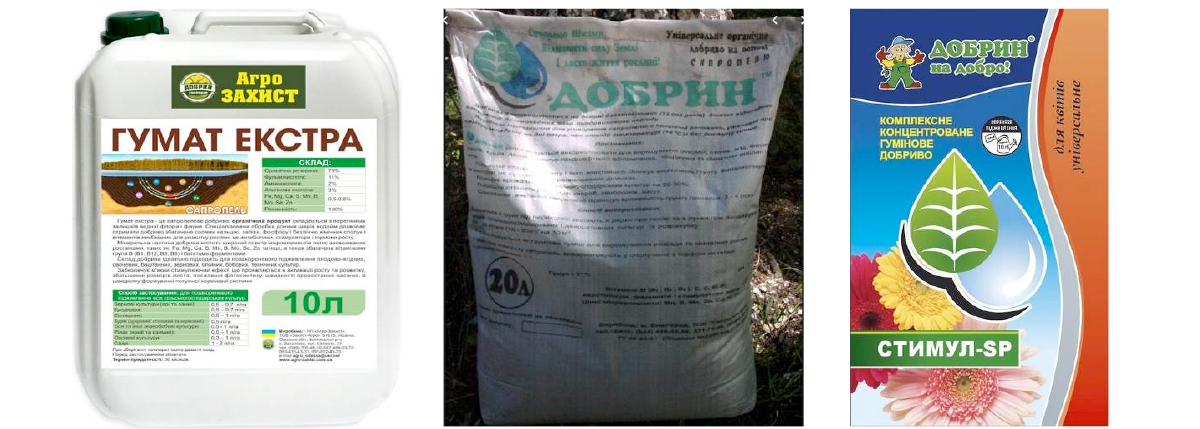
Figure 5 – Market organic fertilizers made of sapropel in Ukraine (examples)
Peat and its derivatives
Peat is a natural material extracted from peatlands. High level sphagnum peat is most suitable for crop production (Fig. 6). Peat is used as an organic fertilizer, mulch, to improve the agrophysical characteristics of humus-poor sandy, clayey soils in the garden and lawns. Peat is also used as a co-substrate for the preparation of compost. All standards of organic farming allow the use of peat for the purposes of horticulture, ornamental horticulture, planting plantations as well as mulch and amendment for mineral soils[4].
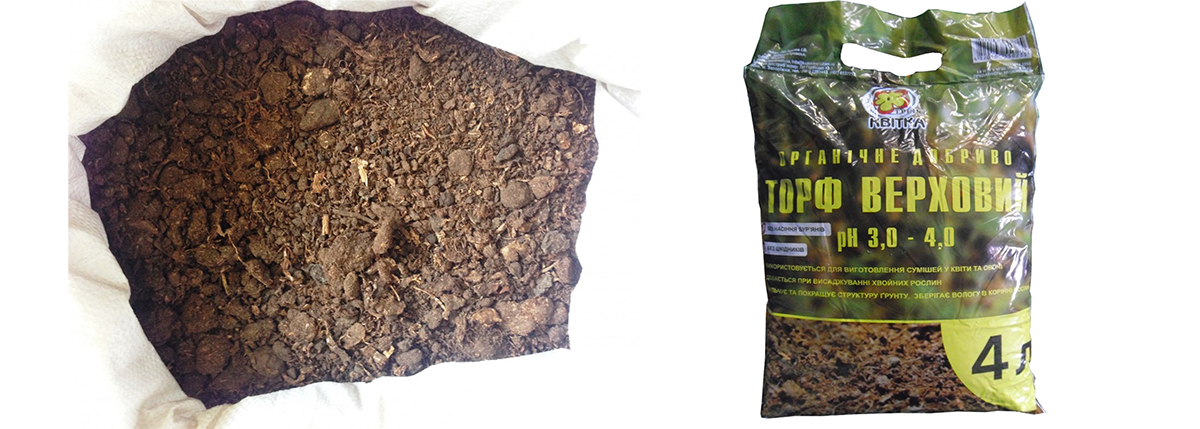
Figure 6 – High level sphagnum peat in Ukraine (example)
A separate niche for peat is the production of – liquid concentrated fertilizers named humates (Fig. 7). Humates are salts of humic acids, which are extracted from peat and brown coal by weak alkaline solutions. Humates are multifunctional compounds that have various chemical and biological properties. Wide range of humates is produced in Ukraine. For example, the brand “Ukrainian Humates” positions its products as environmentally friendly fertilizers for plant growth with a complex of unique trace elements and humic and fulvic acid salts content more than 70%, which provide possibility for the lowest cultivation cost for hectare and increase the yield by 150%[5].
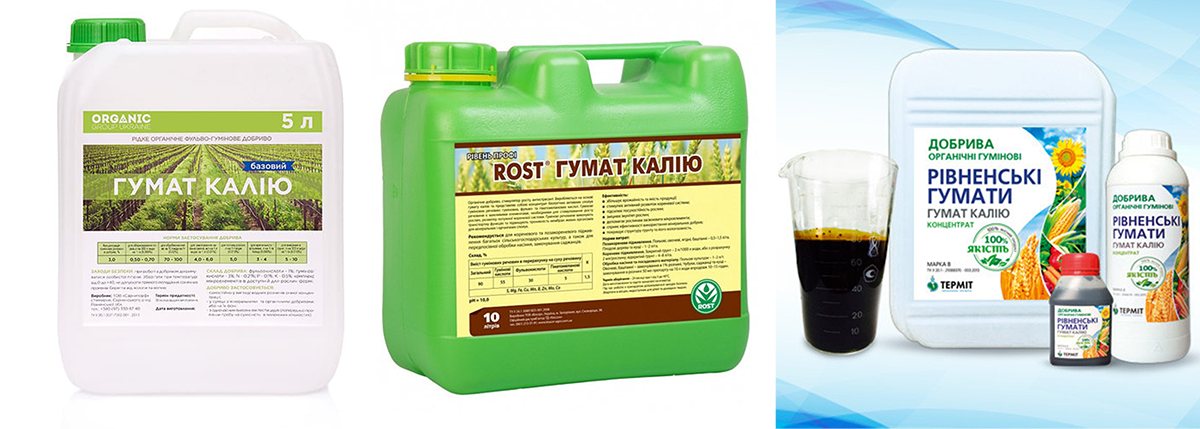
Figure 7 – Humates (liquid concentrated fertilizers) in Ukraine (examples)
Leonardite
Leonardite is a soft waxy, black or brown, shiny, vitreous mineraloid that is easily soluble in alkaline solutions (Fig. 8). It is an oxidation product of lignite, associated with near-surface mining. It is used to condition soils either by applying it directly to the land, or by providing a source of humic acid or potassium humate for application. Leonardite can be added directly to soils to reduce the take-up of metals by plants in contaminated ground, particularly when combined with compost.
In Ukraine leonardite based products are manufactured for example by Leonardite-UA company [6]. The company’s products have a certificate of organic production “Organic Standart”.
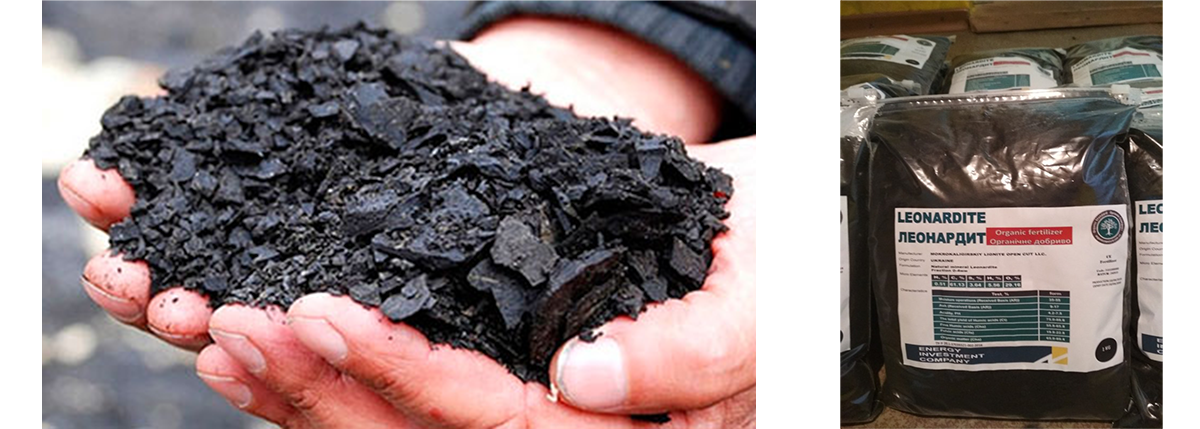
Figure 8 – Leonardite in Ukraine (example)
Organic-mineral fertilizers
Organic-mineral fertilizers (OMF) are a separate class of fertilizers that have recently become widespread, and their production and use is considered as the next stage in the development of mineral fertilizers (Fig. 9). The name itself indicates the presence in their composition of substances of both mineral and organic origin, which, in contrast to traditionally used mineral fertilizers, have environmental, agro-chemical and economic advantages.
In fact, the use of organic-mineral fertilizers of the target composition and properties can, on the one hand, balance the composition of macro- and micro-nutrients for the nutrition of certain crops, and, on the other hand, mitigate or offset the negative impact of using only mineral fertilizers. The combination of mineral and organic components in organic-mineral fertilizers improves the balance and plant nutrition conditions[7].
Peat, sapropel, hydrolysis lignin, manure, litter, solid household waste, residues of wood and fallen leaves, brown coal, others could be used as organic component in OMF. Digestate or products based on digestate are also suitable for OMF production.
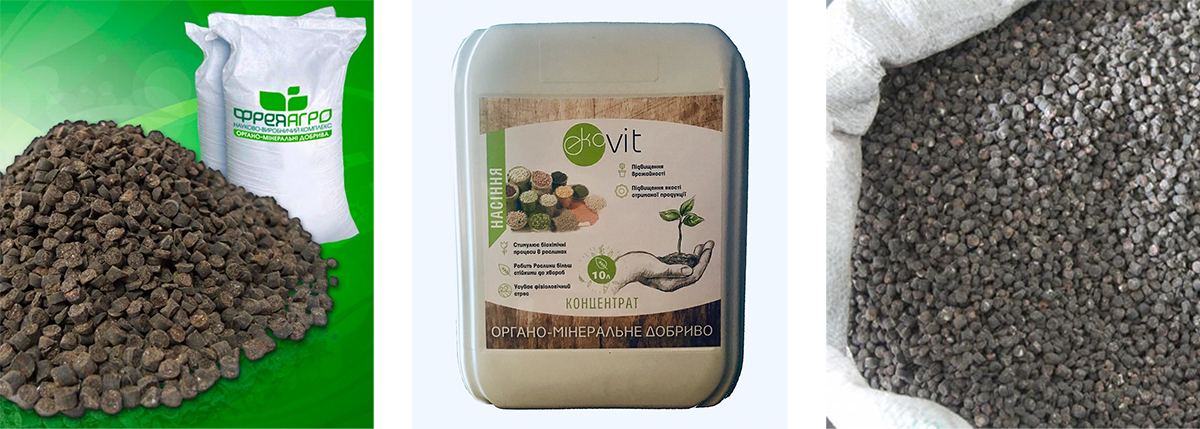
Figure 9 – Organic-mineral fertilizers in Ukraine (examples)
Digestate
Digestate is highly suitable for use as an organic fertilizer or soil improver. In fact, the construction of each biogas plant resulted in digestate generation. In Ukraine, digestate is currently produced at least on 18 industrial scale biogas plants as well as on a number of small biogas plants. One example of small biogas plants is the Integro company biogas plant, which is based on a business model of organic fertilizer production from chicken manure digestate.
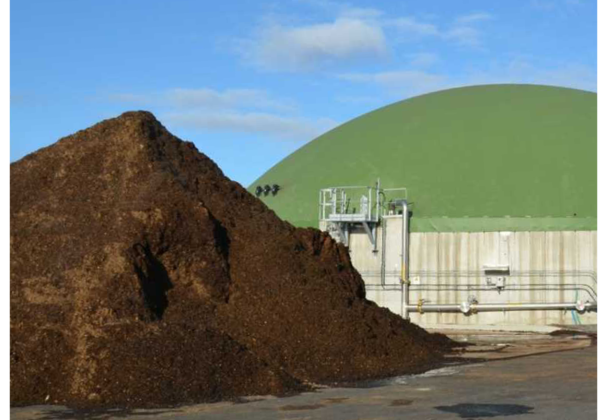
Figure 10 – Digestat on biogas complex
The specific output of the digestate is approximately 5-10 m3for each MWh produced. Thus, according to fairly approximate estimates, the total formation of raw digestate in Ukraine is 1.5-2.0 mln tons a year.
At present, the bulk of the digestate is applied to the fields one way or another in the liquid or solid form.
[1] https://www.biofield.com.ua/uk/products/granule
[2] https://parcel.com.ua/kyrnik-10-kg/
[3] http://agroazbuka.com/uk/sapropel.html
[4] http://kardash.com.ua/organik_zemlerobstvo_1.htm
[5] http://www.ukrgumat.com.ua/produktsiya/tm-ukrajinski-gumati
[7] Yakushko, Sergey Ivanovich, et al. “Organic and mineral fertilizers. Advantages and methods of production” (2008).
Authors: Petro Kucheruk, Yurii Matveev – experts of Bioenergy Association of Ukraine
Read also:
Organic fertilizers in agriculture nutritions recycling
Consumption of organic fertilizers in Ukraine
